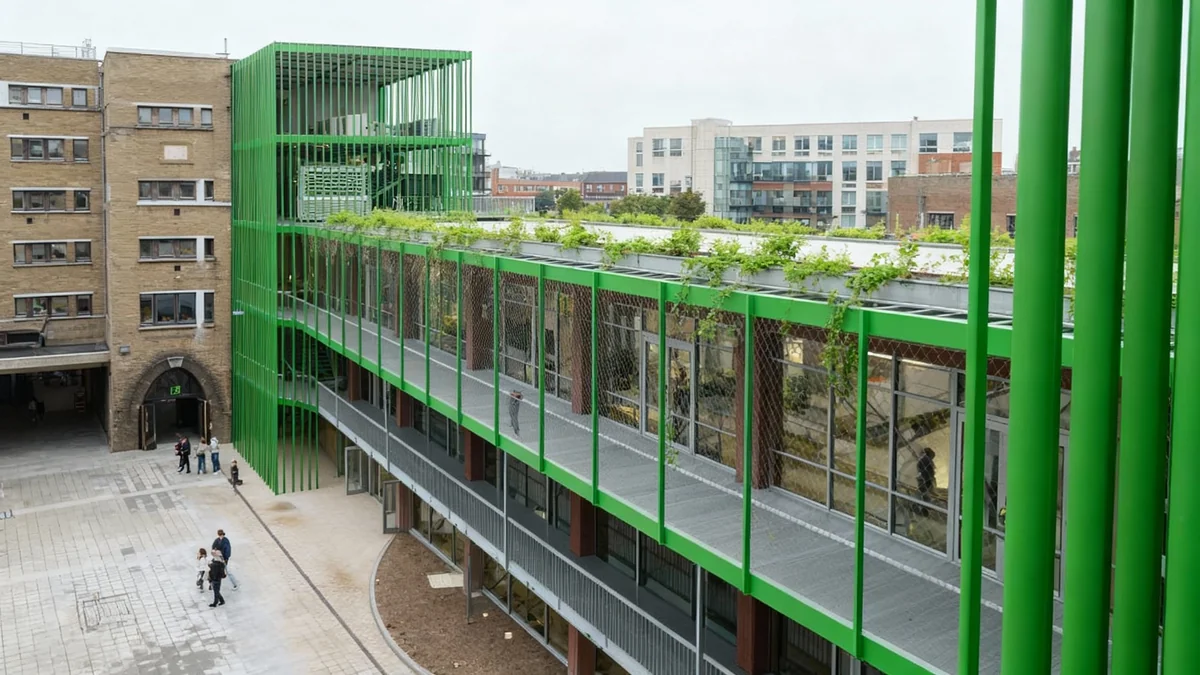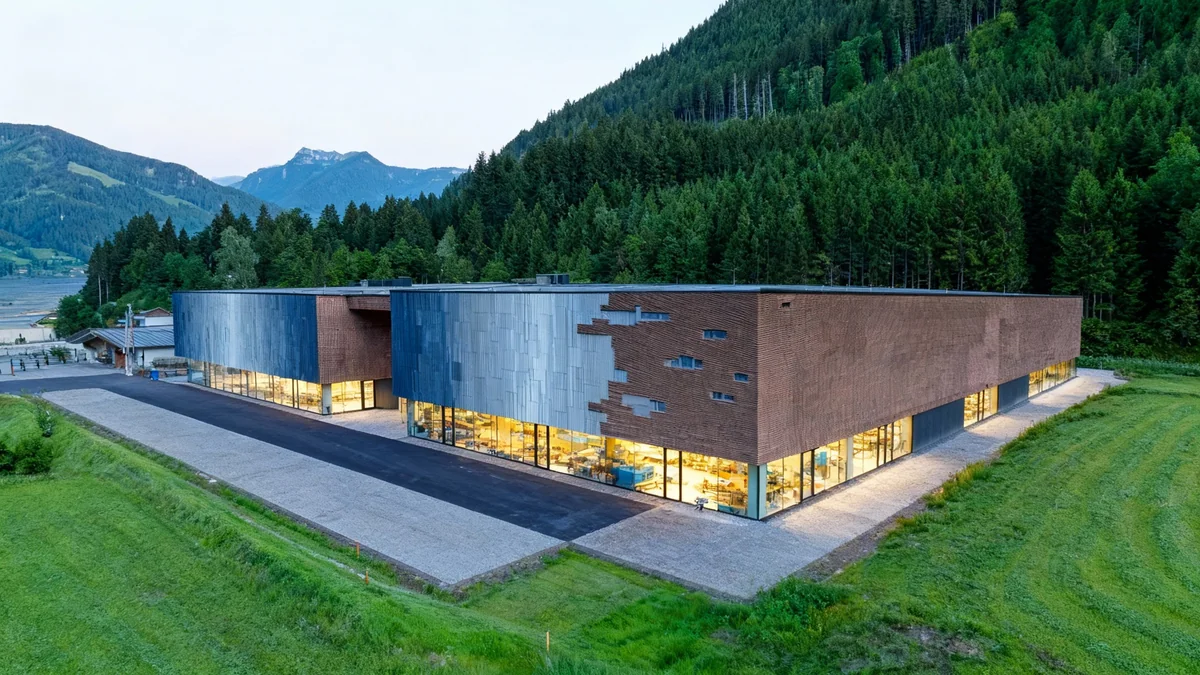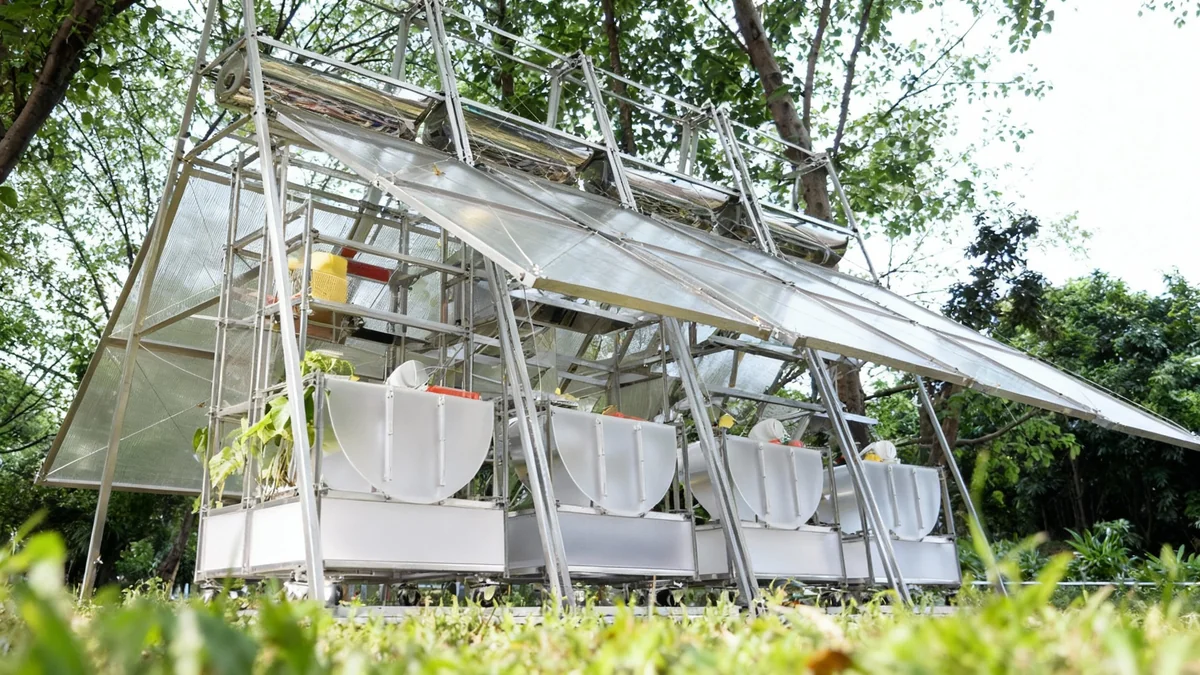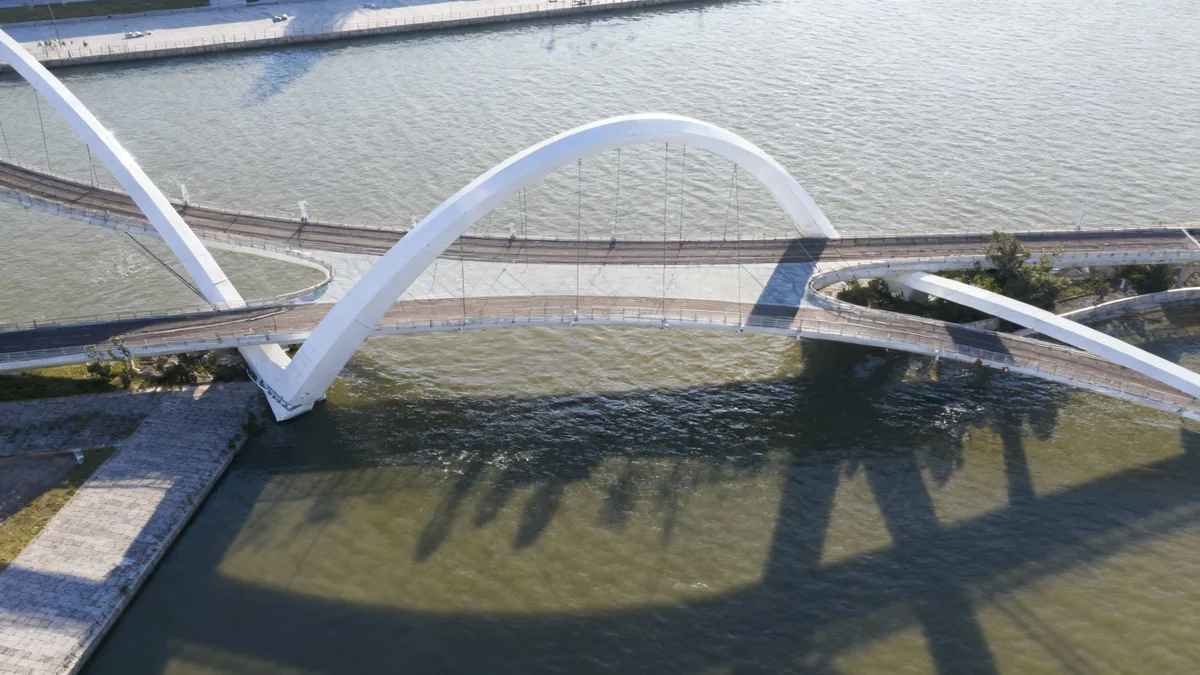A new studio block featuring striking bright green stairwells has opened at VTI Oostende in Ostend, Belgium. Named Atelier PPW, the building provides adaptable workshop and teaching spaces for the school. Its design emphasizes essential structures and external circulation, connecting existing campus buildings.
Key Takeaways
- Atelier PPW at VTI Oostende features bright green steel stairwells.
- The design prioritizes essential structures and adaptable interior spaces.
- External circulation connects the new block with existing campus buildings.
- The project is shortlisted for a Dezeen Awards 2025 in the education category.
New Educational Hub at VTI Oostende Campus
The Atelier PPW project replaces a previous, structurally compromised block on the VTI Oostende campus. This new facility aims to create a more cohesive and accessible environment for students and staff. The design concept focused on building only what is essential, leading to a minimal yet robust structure.
The building's external elements, particularly the bright green stairwells and walkways, are a defining feature. These elements are not just functional but also serve as a visual statement, improving wayfinding across the campus. The choice of color makes them easily identifiable.
Design Philosophy
The architects behind Atelier PPW, NWLND Rogiers Vandeputte and Kris Broidioi, guided the project with a philosophy of "doing more with less." This approach minimized material use, fixed elements, and energy consumption.
Architectural Simplicity and Adaptability
The core of Atelier PPW is an open, double-height space. This central area is designed to facilitate "creative chaos," providing a flexible environment for various activities. A row of concrete columns divides this large hall, which is visible from both the campus and the street through full-height glazing.
On the first floor, classrooms overlook this central hall. These classrooms use reconfigurable partition walls, allowing for easy adaptation to different teaching needs. The top floor houses a series of smaller workshop spaces, further enhancing the building's versatility.
"The project strips architecture to its structural and functional core, revealing a clear framework that can adapt and evolve in time," explained Pieter Vandeputte, an associate at NWLND Rogiers Vandeputte.
This focus on adaptability ensures the building can serve the school's evolving requirements over many years. The robust construction ensures durability, aligning with the sustainable design principles.
External Circulation and Campus Connectivity
One of the most innovative aspects of Atelier PPW is the externalization of its circulation and technical systems. This design choice frees up the interior spaces, making them more open and flexible. It also minimizes the conditioned volume, contributing to energy efficiency.
The bright green staircases and lift volumes flank the block. These structures, wrapped in vertical steel slats, provide access not only to the new building but also offer step-free access to neighboring existing buildings. This creates a seamless connection across the campus.
Future Campus Integration
In a future phase, the existing core across a bridge will receive the same green steel finish. This will further reinforce wayfinding and visual continuity throughout the campus, making the entire area fully accessible.
Metal decks line the inner facade of Atelier PPW, overlooking the campus courtyard. The uppermost of these walkways also features the distinctive bright green color and is shielded by metal grilles, designed to support climbing plants. This adds a touch of greenery to the industrial aesthetic.
Sustainable Design and Recognition
The design team emphasized sustainability through simplicity. By externalizing circulation and infrastructure, they transformed a technical necessity into a key architectural element. This approach reduces the need for complex internal systems and allows for natural ventilation and lighting.
The reddish-brown concrete frame, infilled with full-height glazing, provides bright and airy spaces. This material choice is consistent with previous projects by NWLND Rogiers Vandeputte, such as a garden pavilion in Flanders.
The project's innovative design has not gone unnoticed. Atelier PPW has been shortlisted in the education project category of the prestigious Dezeen Awards 2025. This recognition highlights its contribution to modern educational architecture.
Other projects shortlisted in the same category include an arts center at Brighton College in the UK and a social hub for T A Pai Management Institute in India. This places Atelier PPW among leading global examples of educational facility design.
Key Design Elements
- Bright Green Steel: Used for stairwells, walkways, and lift volumes, providing clear wayfinding and a distinctive visual identity.
- Reddish-Brown Concrete Frame: Forms the structural core, offering robustness and a contrasting aesthetic.
- Full-Height Glazing: Maximizes natural light, creating bright and open interior spaces.
- Reconfigurable Walls: Allow for flexible classroom layouts, adapting to various teaching methods.
- External Circulation: Frees up interior space and minimizes conditioned volume for energy efficiency.
The building serves as a teaching tool itself, demonstrating how simplicity and thoughtful design can lead to sustainable and functional architecture. Its open, flexible, and legible structure embodies a modern approach to educational environments.




